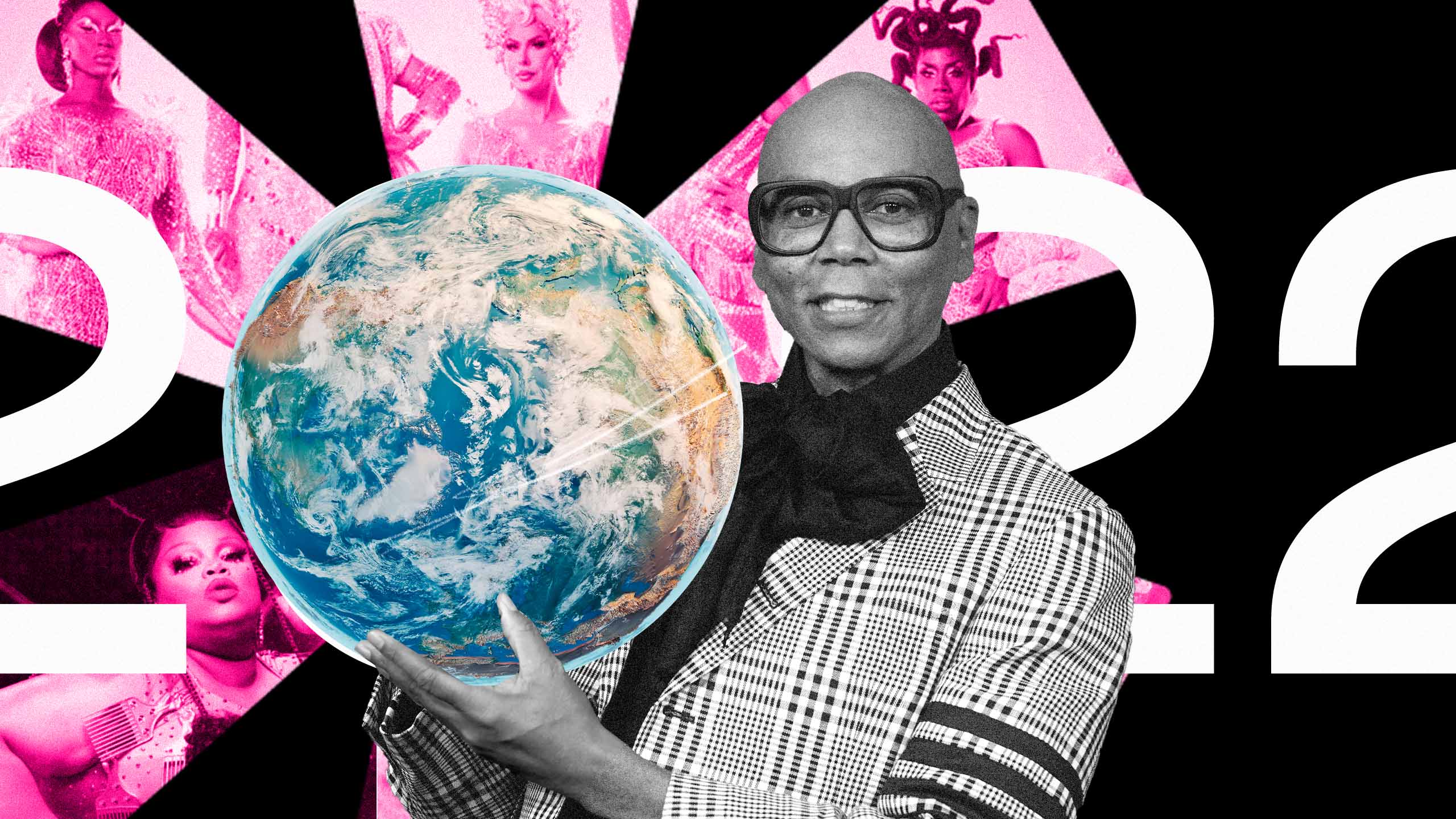It seems like nowadays we end every year by declaring this was Drag Race’s biggest year yet. Last year, more Drag Race seasons aired in one calendar year than ever before; this year, the franchise topped itself again, with 11 across the globe (12 if you include the offshoot Secret Celebrity Drag Race). No doubt we’ll be saying the same thing again this time next year. Such is the pattern of expansion.
But when we look back at the annals of Drag Race years from now, I do think 2022 is the year we’ll identify as a flashpoint. Before, as the drag competition reality series branched out across the globe, it was through singular shows that existed almost in their own universes. Drag Race Thailand, first airing back in 2018, had a distinctly different judging system. As they debuted, other shows would largely immerse themselves in regional references and preferences for certain drag aesthetics. It was really just the Ru-hosted shows in the U.K. and New Zealand (where Down Under is filmed) that kept any kind of strong connection to the flagship series.
It wasn’t until 2022 that we saw the various series start to overlap. It started with RuPaul’s Drag Race: UK vs The World, which delivered on the promise of an international All Stars variant—though admittedly to mixed results. It was a thrill to see main series legends like Jujubee and Mo Heart clash with not only British queens like Baga Chipz, but also Drag Race Holland’s Janey Jacké, Canada’s Drag Race breakout Jimbo and most shocking of all, Drag Race Thailand co-host Pangina Heals. Sure, the season went a little wacky, but as a proof of concept, it was a strong one. The Drag Race multiverse could collide and produce something entirely new.
This, more than anything, has helped 2022 feel like the year of a global Drag Race, versus just a collection of Drag Race spin-offs. Unlike franchises that had international spin-offs that never intersected, like Top Model or Idol (though never forget the one-off mess of World Idol), Drag Race would now feel like an international, multi-part series telling one big story. It’s not the only reality TV franchise to try something like this—Top Chef is giving us a World All-Stars season next year—but it’s the most ambitious plan yet.
That ambition continues into the various series still to come. Not only are series like UK, Canada’s, and Down Under casting for new installments, but Drag Race has greenlit first seasons of German, Mexican and Brazilian series. In Europe, France is gearing up for its second season, while the first seasons of Sverige (Sweden) and Belgique (Belgium) are also on the way. There are reports of a major expansion in Asia as well, where Drag Race Philippines has already become a success story. Perhaps most impressively, Drag Race España, a fan favourite, is not only coming back for a third season, but its own All Stars edition as well.
All of these many new franchises will boost Drag Race in their home countries, but they’ll also fill the pipeline for the newly greenlit Global All Stars series on Paramount+. (Which, one has to imagine, means the end of any future vs The World seasons.) This solves what was increasingly becoming a curiosity: how do international queens figure into the American All Stars series? After all, UK Season 1 champion The Vivienne’s run on All Stars 7 was a major moment, and rumours abound that another non-American will be competing on the upcoming All Stars 8. This additional mixing in of international queens—while vs The World was created to do the same thing—seemed like an odd arrangement; Global All Stars will only further make Drag Race feel like a big international brand. You want to know more about this Global All Stars-level queen? Better watch their original series!
I note all this not as an inherently positive thing, of course. The many different series may give queens from all over the world a platform, but international access remains largely constrained to producer World of Wonder’s streaming platform, WOW Presents Plus. (Although several of the new international series will call Paramount+ home instead.) I would love to see more series like Drag Den, another Filipino drag series hosted by Drag Race alumna Manila Luzon, and Call Me Mother, the Canadian series that features Drag Race Season 9’s Peppermint and Drag Race UK Season 1’s Crystal among the coaches. That kind of competition can make Drag Race even better, versus letting one style of show monopolize the global drag scene.
And I do still bristle a bit at the idea of the many, many different Drag Race series all being necessary viewing. One only has so much space in their media diet, and if this integration continues, more and more of that diet may be taken up by Drag Race content. Too much of a good thing can spoil it; I would still prefer that even the most diehard fans be able to pick and choose which of the various series they want to enjoy.
But for those who say there’s too much Drag Race already now in 2022, I say buckle up. The next few years will continue the trend of more is more, and with Global All-Stars on the way, I can only imagine we’re going to see even more international crossover as we go. The Drag Race machine hit its peak this year—and in 365 days, we’ll be talking about the new peak all over again.


 Why you can trust Xtra
Why you can trust Xtra


